Simple water inlet design for a courtyard tank
I grew up in a rural location, without scheme water. There was
one huge concrete tank, that collected rain water. We had no qualms with
drinking that water, nor water from any other rainwater tanks.
These days it is deemed inadvisable to drink rainwater. Anyway, I
don't want to drink it directly, but for the kettle, for making tea and
coffee. I also boil water then cool it and keep in the fridge for
drinking. I would rather use rainwater -- suspicious about what comes
out of the tap.
I know that rainwater is said to have pollutants in it, from the
atmosphere. That would depend where you live. I live very close to the
coast, and most rain-bearing weather comes from the direction of the
ocean, so should be relatively pure. Also the surfaces on which the
water flows and is collected, are factors. The roof is clay tiles.
I bought a small tank, 720 litres, which is 190 gallons. Good
enough, got it delivered to my backyard. But then, how to connect it to
the downpipe?
Devised a simple solution, so thought to post it here, as it might be
useful for anyone else browsing the web looking for ideas how to do it.
I made it with 50mm PVC pressure pipe and fittings, here it is:
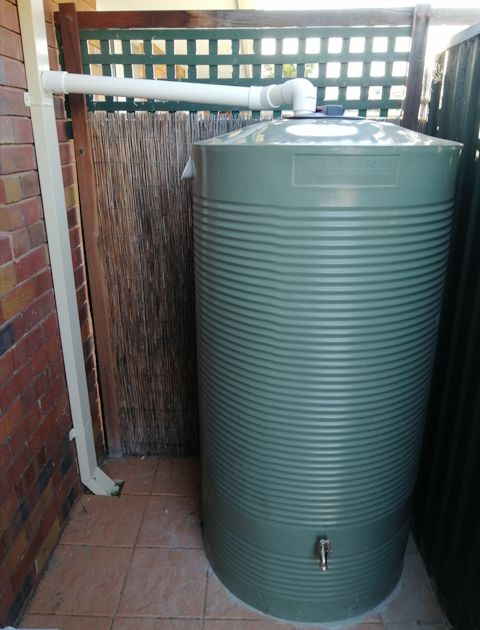
...only difference from that photo, is I stuck a small length of pipe
underneath near the 45 degree elbow, to hold it up more securely.
The top of the tank has a screw-on lid, with a leaf-strainer and mozzie-barrier inside. It was easy to cut a round hole:
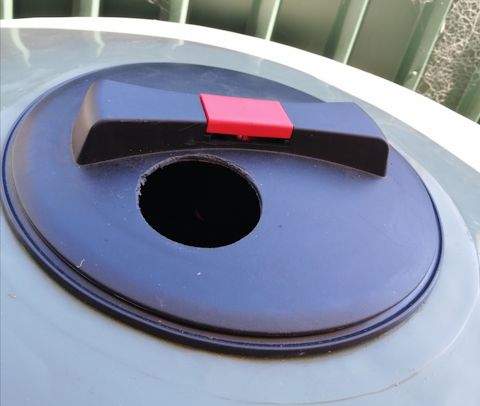
But the other end, connection to the downpipe, that is a challenge. I
wanted it to be variable, so that when the tank gets full, water can be
diverted to flow down the downpipe and not into the tank.
But firstly, cutting the round hole in the downpipe. I know it is due
to my inexperience, but when I used the hole-cutter attachment to the
electric drill, the central hole started to "wander" and the hole being
cut became erratic. So, I resorted to a nibble-tool. Have one of these
from my electronic construction days, works fine on thin galvanised
steel:
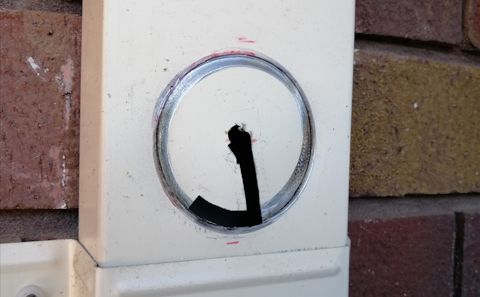
The idea I came up with, to vary water diversion, is a pipe-joiner,
that can be turned. The pipe that inserts inside the downpipe looks like
this, a cutout-section:
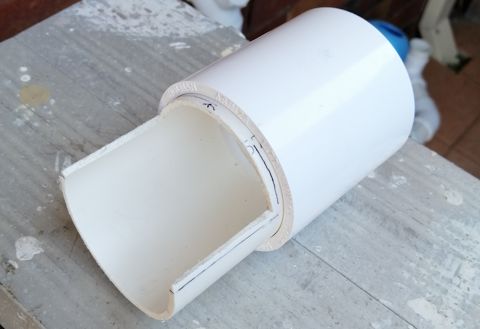
Then I riveted a piece of 0.5mm thick aluminium:
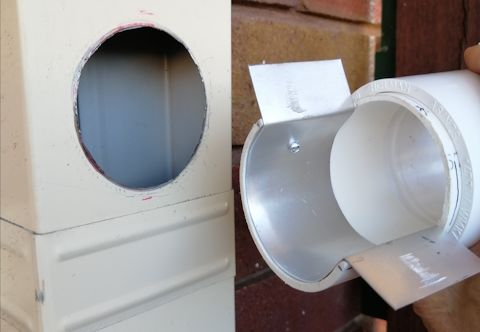
The idea is that the aluminium flanges can be bent inward, for
insertion of the pipe, then once inside, can reach in and push them out
again. Yeah, that worked.
Perhaps a heavy downpour will bend those flanges. I could have bought
some thicker metal, but then, so what if they bend? Even if only half
the water gets diverted into the tank, that should be enough. It is a
small tank. Perhaps then, no need for those flanges.
It came together and installed OK, but I wonder about that one-in-ten
year downpour? If the flanges are turned to vertical, thus minimising
water diversion to the tank, there will be a partial blockage in the
downpipe. So what happens if the water backs-up, right back to the
gutter?
My place has high-front type gutters, with slots cut in the front so
that water overflow will be out the front and not back into the eaves,
as this photo shows:
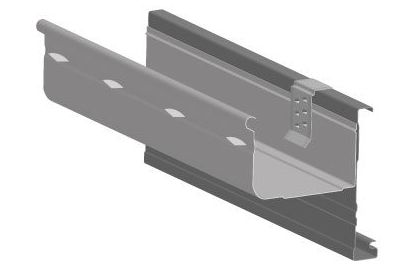
That is probably good enough protection. Even if water does flow back
into the eaves, it will, at worst, flow into the wall cavity. My place
is double-brick, so the inside wall won't perish. Even so, not something
that I would want to happen.
I notice that most new houses built in Perth do not have eaves, the
gutter is mounted right on the outside wall, so that extra runoff
protection is not there.
I could maybe insert something further up the downpipe, to vent-out excess water. Or maybe that is overkill.
EDIT 2020-12-24:
Here is a photo of the completed pipework, showing the small piece of pipe glued on to support the 45 degree elbow:
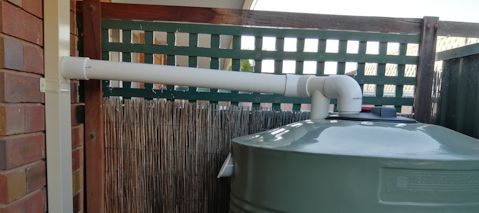
EDIT 2021-01-02:
At the downpipe-end, the pipe-joiner can be turned, so as to divert the
water either into the tank or to continue down the downpipe. I have a
tube of "heavy industrial grease", that I applied to make it easier to
turn the pipe-joiner, however, later on reconsidered -- ideally I should
find a grease that is rated for potable-water.
There are some available, and I purchased HydroSeal tap lubricant:
https://www.bunnings.com.au/hydroseal-15g-thread-lubricant-tube_p4923331

Bunnings also have another brand, Kinetic tap lubricant:
https://www.bunnings.com.au/kinetic-15g-tap-lubricant_p4920449
Tags: general
